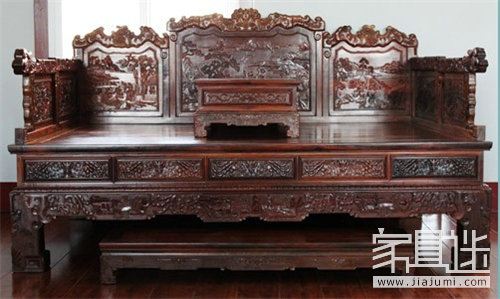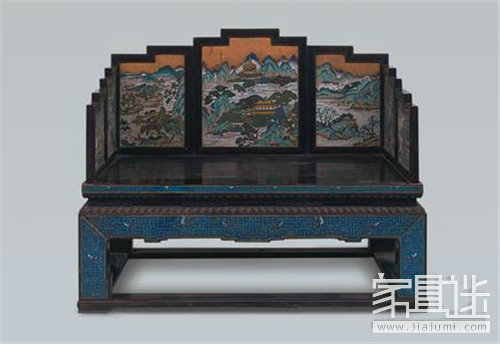We are manufacturer and supplier of Stainless Steel Butter Dish With Lid,Butter Box,Butter Container,Butter Holder,Butter Tray. And we located in Jiangmen, Guangdong, China. If any interested, please contact us for free.
Butter Dish With Lid,Butter Box,Butter Container,Butter Holder,Butter Tray Jiangmen Xinhui Zhancha Metal Products Co,. Ltd. , https://www.zchardware.com
Why are Cantonese-style furniture popular among the world?
Cantonese-style furniture, which emerged in the mid-Qing Dynasty, became one of the most representative styles of "Qing-style" furniture. During the late Ming and early Qing periods, a large number of Western missionaries came to China, leading to increased cultural exchanges between East and West. Due to its strategic location, Guangzhou became a crucial hub for foreign trade and cultural interaction. By the middle of the Qing Dynasty, commercial buildings began to imitate Western architectural forms, and palaces and residences followed this trend, sparking an unprecedented "Western craze." The furniture that matched these structures gradually evolved into a new style that met the needs of the era. As a result, "Guang-style" furniture, known for its large materials, heavy construction, and intricate carvings, became a popular trend and significantly influenced traditional Chinese furniture styles. Features such as carved waistlines, legs, and feet, as well as decorative patterns like the popular "Passiflora," reflected this fusion of styles.
Cantonese-style furniture flourished from the late 17th to the 18th century. Influenced by the Western Baroque and Rococo styles due to Guangzhou's unique geographical position, it emphasized the use of rich materials, elaborate carvings, and mosaic art. The components were typically not joined together but made from solid wood, preserving the natural grain. Decorative patterns were deeply engraved with skillful craftsmanship, resulting in smooth and polished surfaces. These designs were heavily influenced by Western architecture, incorporating motifs that resonated with the cultural trends of the time.
The furniture was widely produced, using spacious and uniform wood. Each piece was often crafted from a single block, with deep carving, rounded edges, and flat surfaces. Decorative elements like the passionflower were clearly influenced by Western aesthetics, while traditional Chinese motifs such as cranes, seaweed, and phoenixes remained popular. Additionally, Cantonese furniture incorporated techniques like inlay work and glass oil painting, further enhancing its artistic appeal.
Cantonese-style furniture was highly favored by the Qing imperial court. A special workshop called "Guangmu Zuo" was established to produce furniture for the royal family, and renowned Cantonese craftsmen were invited to the capital. For instance, during Emperor Guangxu’s reign, a famous craftsman named Liang Shu from Guangdong was summoned to carve a dragon bed for the emperor. Experts note that most antique furniture on the market today dates back to the late Qing or early Republic of China period, with Ming Dynasty pieces being rare. Qing Dynasty furniture is considered highly valuable. In the early 20th century, furniture production was divided into two phases, with pre-war pieces being of higher quality. However, during the late Anti-Japanese War period, furniture became mixed in quality, with poor craftsmanship, and was often referred to as "Ximenkou goods," lacking significant collectible value.
**Related reading:** Inheriting Lingnan culture to create a new Chinese style—Cantonese furniture

**Material: Acid Wood**
Rosewood, also known as sable wood, mahogany, or blackwood, is the most commonly used wood in Cantonese furniture. Its high hardness makes it ideal for the humid climate of Guangdong. Rosewood grows in tropical and subtropical regions, primarily in countries such as India, Thailand, Myanmar, Vietnam, Cambodia, Laos, Brazil, and Madagascar. The wood has a glossy surface, a slanted or irregular texture, and a fine, even structure. It is hard and heavy, usually sinking in water, and is resistant to decay and wear. It is said that high-quality rosewood furniture can last for hundreds of years without issues.
**Cantonese-style furniture emphasizes the use of a single piece of wood**, ensuring consistency in material and craftsmanship.
**Craft: Popular Inlaid Art**
Mosaic art is a key feature of Cantonese-style furniture. Inlay materials come in various colors, including marble, jade, enamel, ceramic, ivory, and amber. Marble and snail shells are particularly widely used. Some people joke that mosaic art is a hallmark of Cantonese furniture.
In the early 20th century, the Eight Immortals table was especially distinctive. The countertop featured an old stone pattern resembling an ink-wash landscape painting, with mountains rising through clouds and pine trees on the peaks. The table had a Western-style horseshoe leg with a half-groove and a purse-sleeve skirt.

**Styling: Integration of Western Elements**
As a major trading port, Guangzhou was influenced by the Baroque and Rococo styles popular in European history, which shaped the design and decoration of Cantonese furniture. For example, waistlines, sheep's hoof legs, and foot carvings blended both Chinese and Western characteristics. A typical example is the goose egg stool from the late Qing Dynasty, originally designed as a set of six stools. The top was made of red root stone, the sides were decorated with flowing streamers, the legs curved with a waist, and the feet took the form of animal claws.
Some decorative patterns were directly inspired by foreign designs, such as the "Dongyanghua" pattern on chairs from the early Republic of China period, which differed from the traditional peony design. Known as "modern flowers" by the Cantonese, they actually represented sunflowers and carried symbolic meanings. The chair back was not straight like in the Qing Dynasty but slightly curved, and the seat had a slight incline, making it more comfortable to sit on. The handrail was called "Ganoderma lucidum hand," and the backrest was "sea bream noodles," reflecting a blend of Chinese and Western tastes.